Portal:Solar System
The Solar System Portal

The Solar System is the gravitationally bound system of the Sun and the objects that orbit it. It formed 4.6 billion years ago from the gravitational collapse of a giant interstellar molecular cloud. The vast majority (99.86%) of the system's mass is in the Sun, with most of the remaining mass contained in the planet Jupiter. The planetary system around the Sun contains eight planets. The four inner system planets—Mercury, Venus, Earth and Mars—are terrestrial planets, being composed primarily of rock and metal. The four giant planets of the outer system are substantially larger and more massive than the terrestrials. The two largest, Jupiter and Saturn, are gas giants, being composed mainly of hydrogen and helium; the next two, Uranus and Neptune, are ice giants, being composed mostly of volatile substances with relatively high melting points compared with hydrogen and helium, such as water, ammonia, and methane. All eight planets have nearly circular orbits that lie near the plane of Earth's orbit, called the ecliptic.
There are an unknown number of smaller dwarf planets and innumerable small Solar System bodies orbiting the Sun. Six of the major planets, the six largest possible dwarf planets, and many of the smaller bodies are orbited by natural satellites, commonly called "moons" after Earth's Moon. Two natural satellites, Jupiter's moon Ganymede and Saturn's moon Titan, are larger than Mercury, the smallest terrestrial planet, though less massive, and Jupiter's moon Callisto is nearly as large. Each of the giant planets and some smaller bodies are encircled by planetary rings of ice, dust and moonlets. The asteroid belt, which lies between the orbits of Mars and Jupiter, contains objects composed of rock, metal and ice. Beyond Neptune's orbit lie the Kuiper belt and scattered disc, which are populations of objects composed mostly of ice and rock.
In the outer reaches of the Solar System lies a class of minor planets called detached objects. There is considerable debate as to how many such objects there will prove to be. Some of these objects are large enough to have rounded under their own gravity and thus to be categorized as dwarf planets. Astronomers generally accept about nine objects as dwarf planets: the asteroid Ceres, the Kuiper-belt objects Pluto, Orcus, Haumea, Quaoar, and Makemake, and the scattered-disc objects Gonggong, Eris, and Sedna. Various small-body populations, including comets, centaurs and interplanetary dust clouds, freely travel between the regions of the Solar System.
The solar wind, a stream of charged particles flowing outwards from the Sun, creates a bubble-like region of interplanetary medium in the interstellar medium known as the heliosphere. The heliopause is the point at which pressure from the solar wind is equal to the opposing pressure of the interstellar medium; it extends out to the edge of the scattered disc. The Oort cloud, which is thought to be the source for long-period comets, may also exist at a distance roughly a thousand times further than the heliosphere. The Solar System is located 26,000 light-years from the center of the Milky Way galaxy in the Orion Arm, which contains most of the visible stars in the night sky. The nearest stars are within the so-called Local Bubble, with the closest, Proxima Centauri, at 4.2441 light-years. (Full article...)
Selected article –

Selected picture
General images
The following are images from various Solar System-related articles on Wikipedia.
Did you know –

- ...that the passing of the Great Comet of 1577 (pictured) caused almost century-long debate, during which Galileo argued that comets were merely optical illusions?
- ...that systematic mapping of the Michelangelo quadrangle on Mercury has revealed the presence of four nearly obliterated multi-ring impact basins, possibly the oldest features in the mapped areas of the planet?
- ...that there have been several proposals for space advertising projects, including a giant, 1km² billboard visible from Earth?
- ...that some astrologers claim Earth has a second moon they call Lilith?
- ...that scarps, ridges, and troughs, such as the 650 km long and 2 km high Discovery Rupes cutting through the Rameau crater, are common features in the Discovery quadrangle on the planet Mercury?
- ...that the Kármán line dividing the Earth's atmosphere and outer space is defined by the Fédération Aéronautique Internationale as 100 km above mean sea level?
- ...that Mars' south polar ice cap may be melting due to global warming?
- ...that Lowell Observatory staff resisted building the telescope used to discover the dwarf planet Pluto until trustee Roger Putnam ordered them to do so?
Categories
| Solar System | ||
|---|---|---|
 |
||
| Celestial mechanics | Comets | ...in fiction |
 |
 | |
| Minor planets | Moons | Planetary missions |
 |
 |
.jpg.webp) |
| Planets... | Sun | Surface feature nomenclature... |
In the news
- April 7: NASA's helicopter Ingenuity survives its first night at Mars
- December 25: 'Earth-based life can survive in hydrogen-rich atmospheres': MIT professor Dr Seager tells Wikinews about her research on organisms thriving in oxygen-less environment
- July 7: Astronomer Anthony Boccaletti discusses observation of birth of potential exoplanet with Wikinews
- May 31: SpaceX successfully launches its first crewed spaceflight
- May 22: Astronomer tells Wikinews about discovery of closest black hole known so far
- October 12: Cosmonaut Alexei Leonov dies at age 85
- October 10: Swedish academy announces 2019 Nobel Prize winners in physics
- September 14: Astronomers find water vapour in atmosphere of exoplanet K2-18b
- March 5: SpaceX Crew Dragon capsule docks with International Space Station
- January 9: Simple animals could live in Martian brines: Wikinews interviews planetary scientist Vlada Stamenković
- November 29: NASA's InSight Lander makes it to Mars
- October 12: Manned Soyuz space mission aborts during launch
Major topics
Solar System: Planets (Definition · Planetary habitability · Terrestrial planets · Gas giants · Rings) · Dwarf planets (Plutoid) · Colonization · Discovery timelineˑ Exploration · Moons · Planetariums
- Sun: Sunspot · Solar wind · Solar flare · Solar eclipse
- Mercury: Geology · Exploration (Mariner 10 · MESSENGER · BepiColombo) · Transit
- Venus: Geology · Atmosphere · Exploration (Venera · Mariner program 2/5/10 · Pioneer · Vega 1/2ˑ Magellan · Venus Express) · Transit
- Earth: History · Geology · Geography · Atmosphere · Rotation
- Moon: Geology · Selenography · Atmosphere · Exploration (Luna · Apollo 8/11) · Orbit · Lunar eclipse
- Mars: Moons (Phobos · Deimos) · Geology · Geography · Atmosphere · Exploration (Mariner · Mars · Viking 1/2 · Pathfinder · MER)
- Ceres: Exploration (Dawn)
- Jupiter: Moons (Amalthea, Io · Europa · Ganymede · Callisto) · Rings · Atmosphere · Magnetosphere · Exploration (Pioneer 10/11 · Voyager 1/2 · Ulysses · Cassini · Galileo · New Horizons)
- Saturn: Moons (Mimas · Enceladus · Tethys · Dione · Rhea · Titan · Iapetus) · Rings · Exploration (Pioneer 11 · Voyager 1/2 · Cassini–Huygens)
- Uranus: Moons (Miranda · Ariel · Umbriel · Titania · Oberon) · Rings · Exploration (Voyager 2)
- Neptune: Moons (Triton) · Rings · Exploration (Voyager 2)
- Planets beyond Neptune
- Pluto: Moons (Charon, Nix, Hydra, Kerberos, Styx) · Exploration (New Horizons)
- Haumea: Moons (Hi'iaka, Namaka)
- Makemake
- Eris: Dysnomia
- Small bodies: Meteoroids · Asteroids (Asteroid belt) · Centaurs · TNOs (Kuiper belt · Scattered disc · Oort cloud) · Comets (Hale–Bopp · Halley's · Hyakutake · Shoemaker–Levy 9)
- Formation and evolution of the Solar System: History of Solar System formation and evolution hypotheses · Nebular hypothesis
- See also: Featured content · Featured topic · Good articles · List of objects
Bold articles are featured.
Italicized articles are on dwarf planets or major moons.
Things you can do

 |
Here are some tasks awaiting attention:
|
Related portals
Related WikiProjects
 |
 | |
| Solar System | Moon | Mars |
|---|---|---|
 |
 | |
| Astronomy | Astronomical objects | Spaceflight |
Associated Wikimedia
The following Wikimedia Foundation sister projects provide more on this subject:
-
 Commons
Commons
Free media repository -
 Wikibooks
Wikibooks
Free textbooks and manuals -
 Wikidata
Wikidata
Free knowledge base -
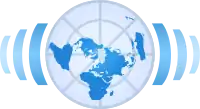 Wikinews
Wikinews
Free-content news -
 Wikiquote
Wikiquote
Collection of quotations -
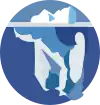 Wikisource
Wikisource
Free-content library -
 Wikiversity
Wikiversity
Free learning tools -
 Wiktionary
Wiktionary
Dictionary and thesaurus
-
 List of all portalsList of all portals
List of all portalsList of all portals -
 The arts portal
The arts portal -
 Biography portal
Biography portal -
 Current events portal
Current events portal -
 Geography portal
Geography portal -
 History portal
History portal -
 Mathematics portal
Mathematics portal -
 Science portal
Science portal -
 Society portal
Society portal -
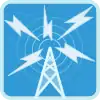 Technology portal
Technology portal -
 Random portalRandom portal
Random portalRandom portal -
 WikiProject PortalsWikiProject Portals
WikiProject PortalsWikiProject Portals












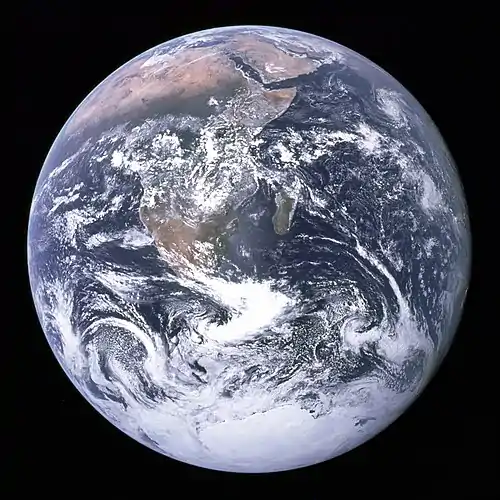

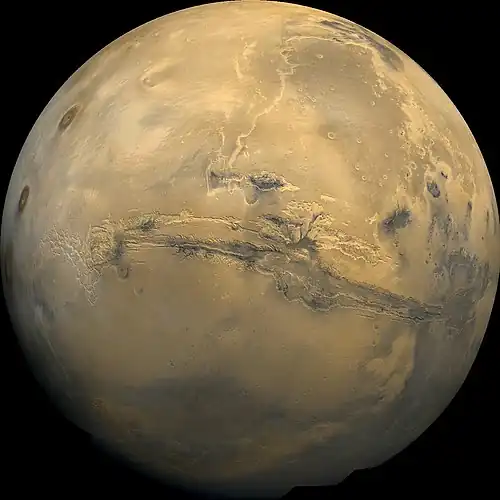










.jpg.webp)
.jpg.webp)



















